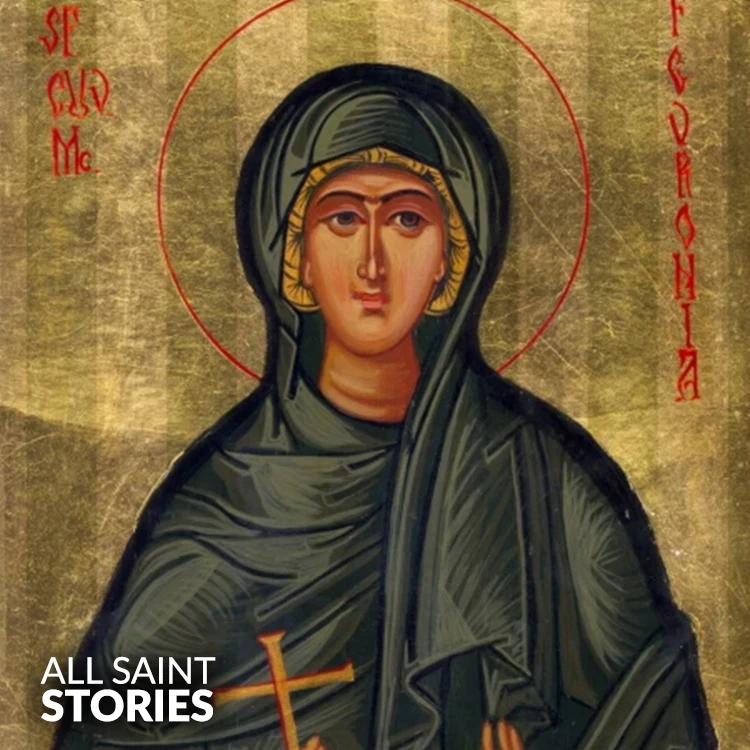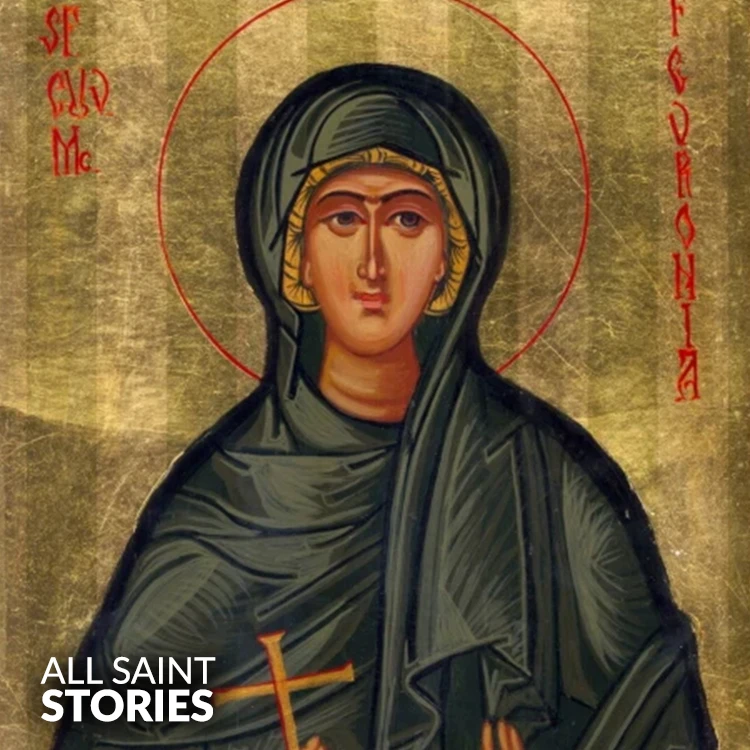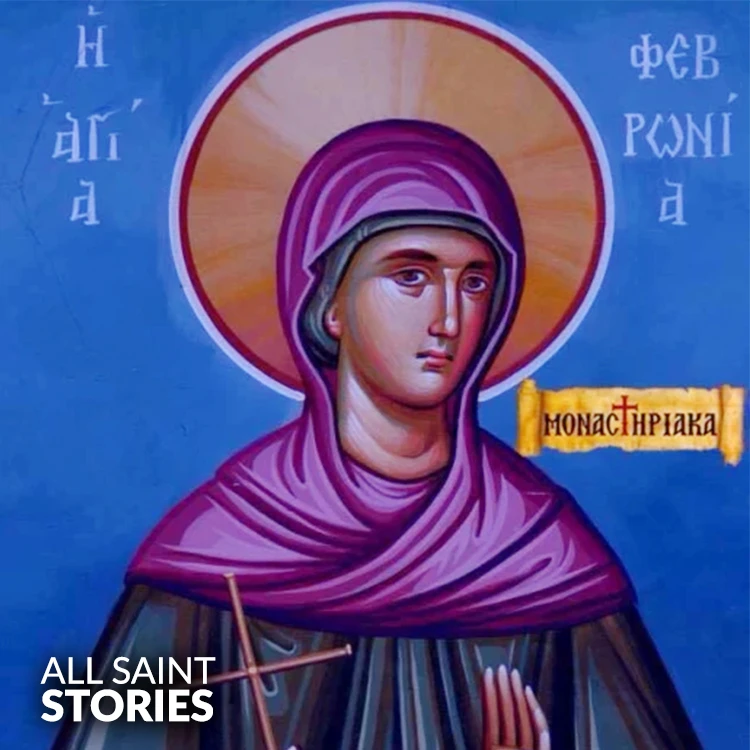"Your lamb Febronia, calls out to You, O Jesus, in a loud voice: 'I love You, my Bridegroom, and in seeking You I endure suffering. In baptism I was crucified so that I might reign in You, and I died so that I might live with You. Accept me as a pure sacrifice, for I have offered myself in love.' Through her prayers save our souls, since You are merciful."
ST. FEBRONIA
ST. FEBRONIA

Saint Febronia of Nisibis was a Christian virgin martyr who suffered during the reign of Emperor Diocletian. Raised in a monastery in Sivapolis, she was known for her piety and commitment to the Christian faith. When soldiers arrived to persecute Christians, she was arrested and subjected to torture for refusing to renounce her beliefs. Her steadfastness led to the conversion of her captors and numerous miracles were reported after her death.
Saint Febronia of Nisibis, also known as the Virgin Martyr Febronia, is commemorated for her unwavering faith and courage during the early Christian persecutions under Emperor Diocletian. Born in 284 AD, she was raised in a monastery in Sivapolis, Assyria, under the guidance of her aunt, Abbess Bryaena. The monastic community was known for its strict observance of Christian teachings, and Febronia was particularly noted for her piety and commitment to the faith.
During the reign of Diocletian, a period marked by intense persecution of Christians, a detachment of soldiers was sent to Assyria to arrest and punish Christians. Upon their arrival, they found only Abbess Bryaena, her assistant Thomais, and the ailing Febronia at the convent. The other nuns had hidden to avoid capture. Despite her illness, Febronia was arrested and brought before the authorities.The Roman governor, Selinus, ordered her to renounce her Christian faith and marry Lysimachus, a young man who had been influenced by his mother's Christian teachings. Febronia refused, choosing to endure suffering rather than betray her beliefs. She was subjected to severe torture, including the severing of her breasts, yet she remained steadfast in her faith.
Witnesses to her suffering, including Thomais and Hieria, a young widow who had converted to Christianity under Febronia's influence, were deeply moved by her endurance. Hieria reproached Selinus for his cruelty, leading to her arrest as well. Eventually, Febronia was beheaded for her refusal to renounce Christ.
After her death, Lysimachus, who had been present during her martyrdom, was so moved by her courage that he converted to Christianity, along with many of his soldiers. He took her body to the convent, where Abbess Bryaena, upon seeing the mutilated remains of her niece, fell senseless. Later, she recovered and ordered the convent gates to be opened so that all could venerate the holy martyr.The convent celebrated Febronia's martyrdom annually, and during the all-night vigils, the nuns reported seeing her at her usual place in the church. Her relics became a source of numSaint Febronia's life and martyrdom were recorded by the nun Thomais, an eyewitness to her deeds. Her story has inspired countless Christians throughout history, serving as a powerful example of faith, courage, and devotion to Christ,
Video Not Found
The information on this website is compiled from various trusted sources. While we aim for accuracy, some details may be incomplete or contain discrepancies.
If you notice any errors or have additional information about this saint, please use the form on the left to share your suggestions. Your input helps us improve and maintain reliable content for everyone.
All submissions are reviewed carefully, and your personal details will remain confidential. Thank you for contributing to the accuracy and value of this resource.
Credits & Acknowledgments
- Anudina Visudhar (Malayalam) – Life of Saints for Everyday
by Msgr. Thomas Moothedan, M.A., D.D. - Saint Companions for Each Day
by A. J. M. Mausolfe & J. K. Mausolfe - US Catholic (Faith in Real Life) – Informational articles
- Wikipedia – General reference content and images
- Anastpaul.com – Saint images and reflections
- Pravachaka Sabdam (Malayalam) – Saint-related content and insights
We sincerely thank these authors and platforms for their valuable contributions. If we have unintentionally missed any attribution, please notify us, and we will make the correction promptly.
If you have any suggestion about ST. FEBRONIA
Your suggestion will help improve the information about this saint. Your details will not be disclosed anywhere.
© 2025 Copyright @ www.allsaintstories.com




 English
English
 Italian
Italian
 French
French
 Spanish
Spanish
 Malayalam
Malayalam
 Russian
Russian
 Korean
Korean
 Sinhala
Sinhala
 Japanese
Japanese
 Arabic
Arabic
 Portuguese
Portuguese
 Bantu
Bantu
 Greek
Greek
 German
German
 Dutch
Dutch
 Filipino
Filipino